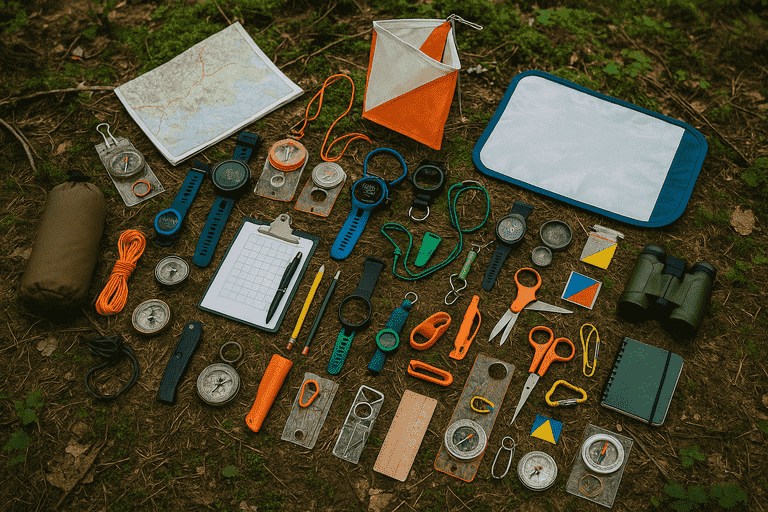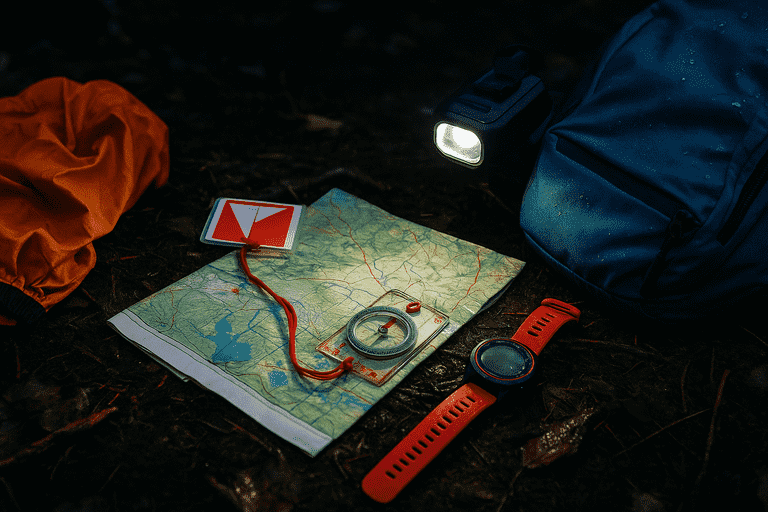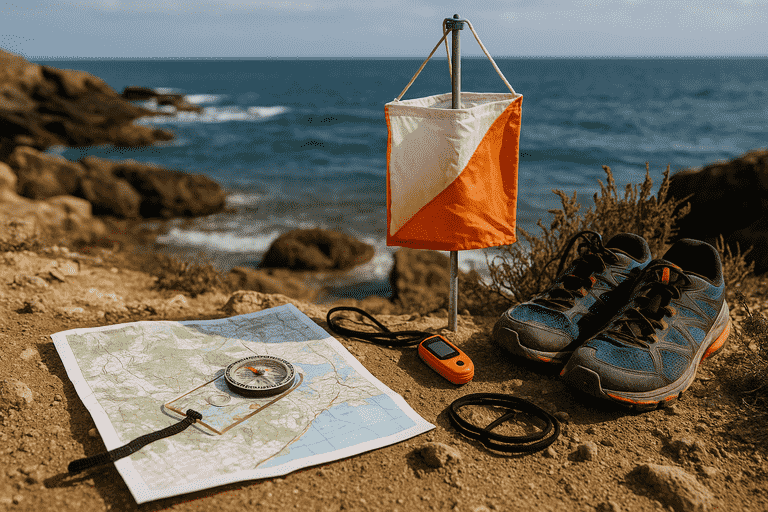When venturing into unfamiliar terrain, you need reliable tools to stay on course. High-quality orienteering equipment ensures accuracy, safety, and efficiency whether you’re a beginner or a competitive athlete. For instance, selecting the right compass and map case can make or break your performance during a timed race.
Moreover, proper gear builds confidence and improves your decision-making under pressure. Therefore, investing in equipment that suits your skill level and environment increases your chances of success in the field.
The Essentials Every Orienteer Needs
While the market offers countless options, only a few pieces of gear truly count as essential. Your core orienteering equipment should include a compass, a detailed map, comfortable footwear, and a whistle. Additionally, waterproof clothing and a map board come in handy during wet or muddy conditions.
Why Cheap Survival Gear Can Still Save Your Life
In addition to gear, knowledge plays a key role. You must practice regularly with your equipment to gain speed and accuracy. As a result, even simple tools become powerful when used with experience and confidence.

Orienteering Equipment That Enhances Safety and Precision
Safety remains a top priority during every orienteering event or wilderness expedition. Therefore, carrying dependable orienteering equipment keeps you prepared for sudden weather changes or navigational challenges. For example, a baseplate compass with luminescent markings helps maintain direction even in low-light conditions.
In addition, a backup whistle or signal mirror can assist rescuers if you become disoriented. The right tools not only guide you through checkpoints but also provide peace of mind throughout the journey.
How to Maintain and Store Orienteering Equipment
Proper maintenance extends the life of your gear and ensures it works when needed most. After each outing, you should clean your orienteering equipment, especially items exposed to dirt, moisture, or sweat. For example, wipe your compass with a soft cloth and keep your maps flat and dry.
Furthermore, always check for damage before heading out again. If you notice cracks, warping, or fading, replace the item immediately. Consequently, you’ll avoid setbacks and preserve the reliability of your setup over time.

Footwear and Clothing That Support Navigation
Although compasses and maps take center stage, your clothing and footwear significantly influence your performance. Durable, lightweight shoes improve mobility, while moisture-wicking layers regulate body temperature. Even though these aren’t technically orienteering equipment, they affect your comfort and endurance directly.
Best Bug Out Bag: The Ultimate Guide for Emergency Preparedness
Additionally, bright clothing helps you remain visible in dense forest or foggy conditions. Choosing functional attire means you’ll stay focused on navigation instead of discomfort, reducing errors during movement and decision-making.
Advanced Tools for Competitive Orienteering
For experienced orienteers, specialized tools can sharpen timing and accuracy. Electronic punching systems, GPS watches, and altimeters provide real-time data to improve performance. Although not required, they complement your standard orienteering equipment and offer deeper insights into route choices.
In addition, training with these tools helps you understand terrain features more precisely. Therefore, advanced gear serves as both a learning tool and a performance booster when used wisely.

Budget-Friendly Orienteering Equipment for Beginners
Getting started doesn’t have to be expensive. Many retailers and clubs offer budget-friendly orienteering equipment suitable for learning the basics. For instance, an entry-level compass and pre-printed map can cost less than a dinner out, yet provide hours of learning.
Furthermore, local orienteering events often loan gear to participants. These opportunities let newcomers explore the sport without major financial commitments, encouraging wider participation in outdoor navigation.
Environmental Considerations When Choosing Gear
Sustainability matters more than ever in the outdoor community. Therefore, choosing eco-friendly orienteering equipment supports both your adventure and the planet. Look for durable items made from recyclable or biodegradable materials, and avoid single-use plastics whenever possible.
Why a Used Compass RV for Sale Might Be the Best Investment
In addition, repair gear when feasible rather than replacing it. Extending the life of your equipment reduces waste and aligns with responsible outdoor ethics, ensuring that future generations can enjoy nature-based sports as well.

Training Exercises That Strengthen Gear Familiarity
Using equipment effectively requires consistent practice. Incorporate training sessions that mimic real scenarios—such as navigating in rain, twilight, or rugged terrain. Familiarizing yourself with your orienteering equipment under pressure builds trust and skill.
Moreover, participate in group drills or simulated races to improve reaction time and adaptability. These habits translate into better performance and fewer mistakes when it truly counts.
Final Thoughts on Building a Dependable Orienteering Setup
Whether you’re preparing for competition or weekend exploration, your success depends on preparation. Carefully selected orienteering equipment simplifies navigation, enhances safety, and boosts confidence. Combined with hands-on experience and proper maintenance, your gear becomes a reliable partner in every journey.
Ultimately, orienteering challenges both mind and body. Therefore, equipping yourself wisely ensures each adventure becomes not just manageable—but unforgettable.

